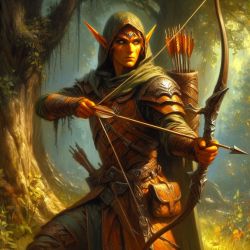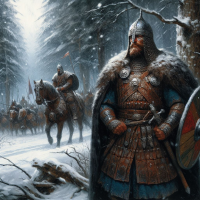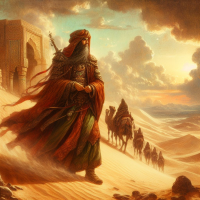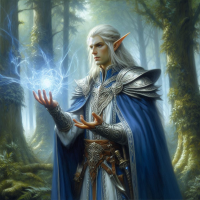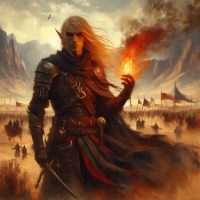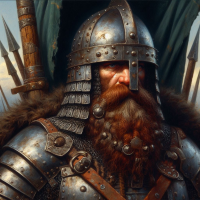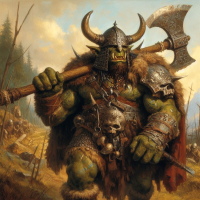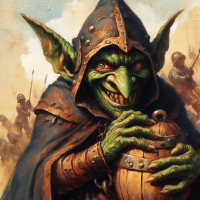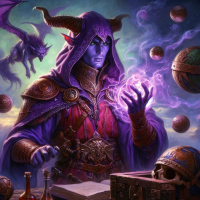Wood Elves: Difference between revisions
mNo edit summary |
Littlebuggie (talk | contribs) |
||
| (37 intermediate revisions by 6 users not shown) | |||
| Line 1: | Line 1: | ||
{| | {{Races | ||
| | |Image = WelfAI.jpg | ||
|Name = Azari’cerr (Wood Elves) | |||
|- | |Pronunciation = Azaa-rie ser | ||
| | |Classification = Elf | ||
| | |Nicknames = Azira'cerr, Wood Elf | ||
|Languages = Common, Azari Linguae | |||
|Average Height = 1.70m - 1.93m (5’7" - 6’4") | |||
|Average Weight = 52kg to 88kg (115lbs - 194lbs) | |||
|Maximum Age = ~450 Years Old | |||
|STR = +1 | |||
|DEF = +0 | |||
| | |AGI = +3 | ||
|INT = +0 | |||
}} | |||
| | |||
| | |||
| | |||
| | |||
| | |||
| | |||
| + | |||
== Introduction == | == Introduction == | ||
The Wood Elves, also known as the “Azari’cerr” amongst themselves, are intense guardians of the Amber Forest. They fight with everything to protect the sacred lands Kharash, the Father, has given to them. | |||
Much like their Azari’cerr ancestors, they come from generations upon generations of grudges, fierceness, and blunt brutality. Their minds cannot be easily changed and once they have a goal, they choose to pursue it at any cost. As a result, most of their kind do not fare well with other races outside their own. They believe any outsider is just that. “Second chances” is not within the vocabulary and to receive forgiveness from an Azari’cerr is a gift from the Spirits themselves. | |||
Contrary to the Azari’cill, Azari’cerr would consider themselves humble amongst and only to one another. The elves can often be seen staying close together as if they were a pack. No Azari’cerr is completely alone. Myln Arbor is their home and to anyone who goes against their home or leaves, is cast out permanently. They take the spirits they surround themselves with deep care and choose to listen to them over all else. | |||
As outsiders traverse through their home territory, the Azari’cerr are ready to attack. Though silently and without much trace. | |||
{| class="wikitable" | |||
|+ | |||
| colspan="4" |“The fierce Wood Elves. I believe I heard a story once, from a friend of a friend. He traveled through that Golden Tree of theirs. And he came back home without a hand! That guy refused to talk further about them. I wouldn’t go through those lands after hearing that.” | |||
'''- Jander Balker, Traveling Hinterlander through Mapledale.''' | |||
|} | |||
== Character Creation == | |||
=== Appearance === | |||
The Azari’cerr, also known as Wood Elves, are a lithe race. They can span from 1.70m to 1.93m. This is suited better for the Forest to be able to maneuver the vast vines and dense woodlands. While females may be slightly shorter than the average male, they mostly hold the same type of build. Wood Elves do not gain a lot of weight in muscle mass to keep a lean frame. With their slender builds, it is common for them to be lightweight. This way they can easily stand on the branches of trees and stealth around without being caught. Most Wood Elves will wear loose-fitted garments. With most of it hand-made by themselves, they make the clothes in shades of the Forest. Green, brown, darker shades of yellow and orange. Though it might seem mundane, most can be creative in their style. More often than not, shorter clothing is preferred to not snag any of their fabric onto a nearby tree. Many Azari’cerr incorporate the nature around them to add it into their outfits. | |||
When it comes to uniforms, the ‘Cerr make use of Kharash’s blessings around them. With the bark of trees and darker colors to blend in the Forest, they can move freely with their bows and weapons. As well as guide themselves through the thickened Forest. Elves reach adulthood at 72 common years and can live up to 400-450 common years. The Azari'cerr keep their youthful appearance for most of their lives, only starting to show visible aging when they reach the age of 350. | |||
It is typical to see a wood elf with brown eyes as it is the most common eye color amongst them. It also spans to shades of green, amber, and in rarer cases, a deep shade of purple. Though that is highly uncommon, most ‘Cerr believe it to be a sign of luck given by Kharash. Their hair, unless impure, are darker shades. Azari’cerr will have darker shades of brown or a deep red. For hairstyles, the women will leave it long. Many incorporate flowers or headbands for ceremonies. While it is uncommon for a Wood Elf female to have her hair up, it is not looked down upon. In fact, most men put their hair up, as they commonly grow it out as well. This is because many Azari’cerr connect their hair to their own spirit. And most will only cut it if something in their life changes, or when they are grieving the loss of a loved one. | |||
The Azari’cerr are a tanned race. As most are hard workers, they spend countless time outside. They prefer it most to being inside. | |||
For the Azari race, all can begin having children at age 100. However, because of the elven year, they can only birth once every four seasons. | |||
[[File:Screenshot 2024-04-02 at 15.16.39.png|none|thumb|461x461px|A simple selection of skin tones for the average Wood Elf.]] | |||
== | === Language === | ||
While Azari'cerr prefer Elvish amongst each other. When met with an outsider, most Azari'cerr will speak common. While, they're neighbors speak Elvish, it is nearly an entirely different dialect. The Azari'cill and Azari'cerr can speak to each other and hold conversations, their titles are different. | |||
{| class="wikitable" | |||
! colspan="6" |Azari Linguae: Quick Guide | |||
|- | |||
! colspan="2" |<u>Greetings</u> | |||
! colspan="2" |<u>Races</u> | |||
! colspan="2" |<u>Titles</u> | |||
|- | |||
!Elvish | |||
!Common | |||
!Elvish | |||
!Common | |||
!Elvish | |||
!Common | |||
|- | |||
|Vale | |||
|Hello/Greetings | |||
|Azari | |||
|Elf | |||
|Khari'cerr | |||
|Wild Father/Guardian | |||
|- | |||
|Vale’tar | |||
|Farewell | |||
|Azari’cill | |||
|High Elf/Pure Elf | |||
|Lla'viltir | |||
|Head of Military | |||
|- | |||
|Fílo(s) | |||
|Friend(s) | |||
|Azari’cerr | |||
|Wood Elf/Wild Elf | |||
|Tericyées | |||
|Chief | |||
|- | |||
! colspan="2" rowspan="12" | | |||
|Azari’lunn | |||
|Dark Elf/Moon Elf | |||
|Tri'cilus | |||
|Captain | |||
|- | |||
|Azari’soll | |||
|Fire Elf/Sun Elf | |||
|Theri'cerr | |||
|Sentinel of the Wilderness | |||
|- | |||
|Dur’arum | |||
|Denur | |||
|Visera | |||
|Minister | |||
|- | |||
|Vari(s) | |||
|Human(s) | |||
|Ar’mágoi | |||
|Arch-Mage/Spellcaster | |||
|- | |||
|Ghesiri(s) | |||
|Faulskins(s) | |||
|Mágoi | |||
|Mage/Spellcaster | |||
|- | |||
|De’nevir | |||
|Tiefling | |||
|Scinar(i)’cilus | |||
|High Priest(ess) | |||
|- | |||
! colspan="2" rowspan="6" | | |||
|Scinari | |||
|Priestess | |||
|- | |||
|Scinar | |||
|Priest | |||
|- | |||
|Scini | |||
|(Older) Student | |||
|- | |||
|Scin | |||
|(Young) Student | |||
|- | |||
|Bessi’inn | |||
|Blessed one | |||
|- | |||
|Medi’cilus | |||
|Doctor/Medic | |||
|} | |||
=== Naming Schemes === | |||
Elven names are complex and most of the time, hard to pronounce for outsiders. However, there is quite a lot of structure behind it. Azari'cerr believes names hold power, and a name is often tied to natural or magical elements. Most of the Elven family names are written in the ancient Elven tongue, the Azari Linguae, a mostly unused language lost to time but kept alive by Elves of the Glade in order to keep some semblance of their glorious past alive. | |||
Elven surnames are the most important part of an elven name, being tied to your ancestors and the deeds they did. Surnames hold power and honor in them, as the surname is the deeds and strength of those who bear it themselves. But the opposite is true too, if one were to be a traitor or failure, that would be passed on by surname as well. To any Wood Elf, the greatest punishment is to bring shame to their surname because of Trial failures or treason. Wood Elven family names are a sign of power and respect, as the deeds one's ancestors have done may pass on to the descendants, thus a surname is a way to identify the stronger individuals. | |||
{| class="wikitable" | |||
|+ | |||
|'''Examples of Wood Elven surnames:''' Auril, Cerill, Delarus, Erd’ale, Faesatra, Mylin, Pineblossom, Roseshade, Vidarr. | |||
|} | |||
Most Wood Elven forenames are written in Azari Linguae, just like surnames. They do not hold as much honor or strength as a surname, however, it is a special name, often housing natural or magical elements them. Most of the names have references to the natural season they were born in, as that ties them to the natural calendar. Parents also put in elements of their name to continue the legacy in their offspring. Furthermore, sometimes a name includes elements of the natural world, seeing the ties between Wood Elves and nature is enormous | |||
{| class="wikitable" | |||
|+ | |||
|'''Examples of Wood Elven forenames:''' Apollon, Aestan'err, Crius, Eldris, Elion, Feay'ill, Freyr, Hythis, Ilona, Khar'vill, Lamen'vir, Mythan'tharr, Rennyn, Solana, Yelran, Zhoron. | |||
|} | |||
=== | === Cultures === | ||
Nations and cultures in which the Wood Elven race is present sorted by dominance. | |||
{| class="wikitable" | |||
|- | |||
![[File:MitronaAi.png|frameless|200x200px]] | |||
![[The Woodland Realm of Mitrona]] | |||
|Even the bravest of warriors have learned to fear the vast tracts of woodland that can be found throughout the realms of Eden. Surrounded by trees, it is all too easy to get disoriented and lost, but there is a more primal dread at work. In the forest, no one can ever be sure what is lurking just out of sight. Sounds are muffled, yet noises seem to come from everywhere – the snapping of twigs, a sinister rustling of leaves, and the creaking of the wind-stirred canopy above. Nowhere to hide, nowhere to run. Nothing to hear you besides the elemental wrath of the Azari’cerr. These people are highly-skilled elves with centuries of experience in their home environment, the forest. Once an outsider enters Myln Arbor - The mystical forest most of these people call home - it is unlikely he will leave in one piece. | |||
|- | |||
![[File:Image.png|frameless|200x200px]] | |||
![[The Enlightened Kingdom of Luminion]] | |||
|The Scions of Illumination, as the Azari’cill call themselves, invoke this name because their existence reflects the pinnacle of civilization under the Mother’s wing. These luminous beings have blood that glimmers by magical properties. The glittering spires of the Azari cities stand like beacons in the lands where skill and enlightenment saturate the very air. The Azari’cill absorbed so much of this innate potential that when at war, it is said that the phalanxes of the Azari warhosts glow with robust power. An assault by an Azari’cill army is swift and carried out with flawless precision. The enemy is met with a forest of blades and barrages of elemental wrath. This claim of mastery also carries a deadly arrogance. The Azari come in glory, but they hail from a broken land, their elegant spires toppled and their statuary crumbled into the dust of a dead empire. The stories tell that it was the scourge of Fineall that ravaged the lands of silver; it was unavoidable. The age of the fallen spires has turned the empire of enlightenment into a spell-haunted ruin. Ever since the Time of Reinvention, the Azari’cill have managed to make peace with the lands they call home. | |||
|} | |||
== World View == | |||
{| class="wikitable" | |||
![[File:AverageChad.png|frameless|200x200px]] | |||
!On Attians... | |||
|'''Negative''' | |||
“These Vari really think they own the world, do they? For as long as they're outside the Forest, they are safe from us. I am merely grateful they have such short lifespans. Not only this, but I've not seen a singular one whom is to be trusted. Their selfish thinking will put many in danger. Not even their highest priest can save them." | |||
* Pallar Erd’ale, a Warrior from Mitrona. | |||
|- | |||
![[File:AverageSadge.png|frameless|200x200px]] | |||
!On Hinterlanders… | |||
|'''Slightly Negative''' | |||
“They are for sure barbarians from the stories I’ve heard, but as long as they stay away from us there will be no problem. If they do decide to ravage our forest, they will see what kind of barbarians we can be.” | |||
* Hythor Branchborn, Festival Worker in Sunscape. | |||
|- | |||
|[[File:KhadanMale.png|frameless|200x200px]] | |||
!On the Khadan… | |||
|'''Neutral''' | |||
“The Vari of the South. We do not really come in contact with them much, and that’s good. As long as they stay away from us, we will stay away from them. The place they live in really is desolate, very different from Myln Arbor.” | |||
* Raelynn Sporeblossom, Salus Limin Shop Owner. | |||
|- | |||
![[File:HighElfMan.png|frameless|200x200px]] | |||
!On High Elves… | |||
|'''Neutral''' | |||
“The Azari’cill, our brethren. As long as they stay to their ground and we to ours, I see no problem. Although they are a little extremist and strange with their entire purity system. However, I see that they're arrogance will only take them so far.” | |||
* Céus Festrea, Mitronian Bartender. | |||
|- | |||
![[File:DarkElf.png|frameless|200x200px]] | |||
!On Dark Elves… | |||
|'''Slightly Negative''' | |||
“Oh, you know the stories? The Age of Fallen Spires, we and our brethren banishing them from the Glade! It is said to be a legend by many, but even legends have truth behind them. Be cautious of those 'Lunn. Who knows what they are plotting." | |||
* Faey Mylin, Scholar in Mitrona. | |||
|- | |||
![[File:DenurManAI.png|frameless|200x200px]] | |||
!On Denur… | |||
|'''Neutral''' | |||
“The Denur, a crafty people. They live in the North, so we do not see them often. They are stubborn people, but so are we. We each tend to our business and that is perfectly fine. I have heard they are amazing constructors and their homes are magnificent.” | |||
* Myth’ley Auril, Wood Elven Hunter. | |||
|- | |||
![[File:HalflingAIMan.png|frameless|200x200px]] | |||
!On Halflings… | |||
|'''Neutral''' | |||
“Though they claim to be friends to nature, you can never be too sure of them, just like the rest of those outsiders. They can be quite strange, too. It’s easier to always keep a watchful eye around them.” | |||
* Soli Faestar, Dockworker in Salus Limin. | |||
|- | |||
![[File:OrcGrrrMan.png|frameless|200x200px]] | |||
!On Orcs… | |||
|'''Negative''' | |||
“Foul Ghesiri, they know nothing but violence. We show force to protect our forest and our traditions, but they show force only to destroy. They are mindless creatures, only wanting flesh and blood. If we let them, they would burn down our forest.” | |||
* Aeden Cerrill, Mitronian Guard. | |||
|- | |||
![[File:GreedyLilThing.png|frameless|200x200px]] | |||
!On Goblins… | |||
|'''Negative''' | |||
“They are cunning people, you really cannot trust them around here. If they get a chance, they will steal anything they lay their eyes on. However, you can empower them quite quickly, if they do not hit legs.” | |||
* Maeryn Silvas, Salus Limin Marine. | |||
|- | |||
![[File:TieflingPorple.png|frameless|200x200px]] | |||
!On Tieflings… | |||
|'''Friendly''' | |||
“During the Rotten Plague, we attacked and destroyed their home. I kind of feel sorry for them. But they are a wandering people and have done quite well for themselves in many kingdoms. I feel like in Mitrona, they are accepted again. As if nothing happened…” | |||
* Freyr Leaftale, Herbalist in Myln Arbor. | |||
|} | |||
* | |||
== Character Traits == | |||
Upon creation of a Wood Elf character, you can pick two of the following traits for your character to reflect their background. | |||
{| class="wikitable" | |||
! colspan="2" |Racial Traits - Wood Elf | |||
|- | |||
!Nightseer | |||
|Players with this trait get the night vision effect when entering dark spaces and during the night. | |||
|- | |||
!Aspect of The Amber Dawn | |||
|Players with this trait double the amount of attacks on ranged weapons during the season Amber Dawn. | |||
Outside of The Amber Dawn characters with this trait may use this effect once per CRP engagement. | |||
|- | |||
!Aspect of Eden's Shine | |||
|Players with this trait deal one additional damage on all melee attacks during the season Edens Shine (this trait can only activate twice per turn). | |||
Outside of Eden's Shine characters with this trait may use this effect once per CRP engagement. | |||
|- | |||
!Aspect of The Emerald Dusk | |||
|Players with this trait can use the action "healing burst" which heals DE HP to everyone within 3 meter range during the season The Emerald Dusk. | |||
Outside of The Emerald Dusk characters with this trait may use this action once per CRP engagement. | |||
|- | |||
!Aspect of Lilith's Veil | |||
|Players with this trait know the "Ice Maiden's Kiss" spell without needing to be a spellcaster during the season Lilith's Veil. | |||
Outside of Liliths Veil characters with this trait can attempt to cast this spell once per CRP engagement. | |||
|} | |||
__NOTOC__ | |||
{{Navtable_Races|class="mw-collapsible"}} | {{Navtable_Races|class="mw-collapsible"}} | ||
Latest revision as of 06:38, 25 October 2024
| Azari’cerr (Wood Elves) | |
|---|---|
| Pronunciation | Azaa-rie ser |
| Classification | Elf |
| Nicknames | Azira'cerr, Wood Elf |
| Languages | Common, Azari Linguae |
| Average Height | 1.70m - 1.93m (5’7" - 6’4") |
| Average Weight | 52kg to 88kg (115lbs - 194lbs) |
| Maximum Age | ~450 Years Old |
| Stat Bonuses |
+1 Strength +0 Defense +3 Agility +0 Intelligence |
Introduction
The Wood Elves, also known as the “Azari’cerr” amongst themselves, are intense guardians of the Amber Forest. They fight with everything to protect the sacred lands Kharash, the Father, has given to them.
Much like their Azari’cerr ancestors, they come from generations upon generations of grudges, fierceness, and blunt brutality. Their minds cannot be easily changed and once they have a goal, they choose to pursue it at any cost. As a result, most of their kind do not fare well with other races outside their own. They believe any outsider is just that. “Second chances” is not within the vocabulary and to receive forgiveness from an Azari’cerr is a gift from the Spirits themselves.
Contrary to the Azari’cill, Azari’cerr would consider themselves humble amongst and only to one another. The elves can often be seen staying close together as if they were a pack. No Azari’cerr is completely alone. Myln Arbor is their home and to anyone who goes against their home or leaves, is cast out permanently. They take the spirits they surround themselves with deep care and choose to listen to them over all else.
As outsiders traverse through their home territory, the Azari’cerr are ready to attack. Though silently and without much trace.
| “The fierce Wood Elves. I believe I heard a story once, from a friend of a friend. He traveled through that Golden Tree of theirs. And he came back home without a hand! That guy refused to talk further about them. I wouldn’t go through those lands after hearing that.”
- Jander Balker, Traveling Hinterlander through Mapledale. |
Character Creation
Appearance
The Azari’cerr, also known as Wood Elves, are a lithe race. They can span from 1.70m to 1.93m. This is suited better for the Forest to be able to maneuver the vast vines and dense woodlands. While females may be slightly shorter than the average male, they mostly hold the same type of build. Wood Elves do not gain a lot of weight in muscle mass to keep a lean frame. With their slender builds, it is common for them to be lightweight. This way they can easily stand on the branches of trees and stealth around without being caught. Most Wood Elves will wear loose-fitted garments. With most of it hand-made by themselves, they make the clothes in shades of the Forest. Green, brown, darker shades of yellow and orange. Though it might seem mundane, most can be creative in their style. More often than not, shorter clothing is preferred to not snag any of their fabric onto a nearby tree. Many Azari’cerr incorporate the nature around them to add it into their outfits.
When it comes to uniforms, the ‘Cerr make use of Kharash’s blessings around them. With the bark of trees and darker colors to blend in the Forest, they can move freely with their bows and weapons. As well as guide themselves through the thickened Forest. Elves reach adulthood at 72 common years and can live up to 400-450 common years. The Azari'cerr keep their youthful appearance for most of their lives, only starting to show visible aging when they reach the age of 350.
It is typical to see a wood elf with brown eyes as it is the most common eye color amongst them. It also spans to shades of green, amber, and in rarer cases, a deep shade of purple. Though that is highly uncommon, most ‘Cerr believe it to be a sign of luck given by Kharash. Their hair, unless impure, are darker shades. Azari’cerr will have darker shades of brown or a deep red. For hairstyles, the women will leave it long. Many incorporate flowers or headbands for ceremonies. While it is uncommon for a Wood Elf female to have her hair up, it is not looked down upon. In fact, most men put their hair up, as they commonly grow it out as well. This is because many Azari’cerr connect their hair to their own spirit. And most will only cut it if something in their life changes, or when they are grieving the loss of a loved one.
The Azari’cerr are a tanned race. As most are hard workers, they spend countless time outside. They prefer it most to being inside.
For the Azari race, all can begin having children at age 100. However, because of the elven year, they can only birth once every four seasons.
Language
While Azari'cerr prefer Elvish amongst each other. When met with an outsider, most Azari'cerr will speak common. While, they're neighbors speak Elvish, it is nearly an entirely different dialect. The Azari'cill and Azari'cerr can speak to each other and hold conversations, their titles are different.
| Azari Linguae: Quick Guide | |||||
|---|---|---|---|---|---|
| Greetings | Races | Titles | |||
| Elvish | Common | Elvish | Common | Elvish | Common |
| Vale | Hello/Greetings | Azari | Elf | Khari'cerr | Wild Father/Guardian |
| Vale’tar | Farewell | Azari’cill | High Elf/Pure Elf | Lla'viltir | Head of Military |
| Fílo(s) | Friend(s) | Azari’cerr | Wood Elf/Wild Elf | Tericyées | Chief |
| Azari’lunn | Dark Elf/Moon Elf | Tri'cilus | Captain | ||
| Azari’soll | Fire Elf/Sun Elf | Theri'cerr | Sentinel of the Wilderness | ||
| Dur’arum | Denur | Visera | Minister | ||
| Vari(s) | Human(s) | Ar’mágoi | Arch-Mage/Spellcaster | ||
| Ghesiri(s) | Faulskins(s) | Mágoi | Mage/Spellcaster | ||
| De’nevir | Tiefling | Scinar(i)’cilus | High Priest(ess) | ||
| Scinari | Priestess | ||||
| Scinar | Priest | ||||
| Scini | (Older) Student | ||||
| Scin | (Young) Student | ||||
| Bessi’inn | Blessed one | ||||
| Medi’cilus | Doctor/Medic | ||||
Naming Schemes
Elven names are complex and most of the time, hard to pronounce for outsiders. However, there is quite a lot of structure behind it. Azari'cerr believes names hold power, and a name is often tied to natural or magical elements. Most of the Elven family names are written in the ancient Elven tongue, the Azari Linguae, a mostly unused language lost to time but kept alive by Elves of the Glade in order to keep some semblance of their glorious past alive.
Elven surnames are the most important part of an elven name, being tied to your ancestors and the deeds they did. Surnames hold power and honor in them, as the surname is the deeds and strength of those who bear it themselves. But the opposite is true too, if one were to be a traitor or failure, that would be passed on by surname as well. To any Wood Elf, the greatest punishment is to bring shame to their surname because of Trial failures or treason. Wood Elven family names are a sign of power and respect, as the deeds one's ancestors have done may pass on to the descendants, thus a surname is a way to identify the stronger individuals.
| Examples of Wood Elven surnames: Auril, Cerill, Delarus, Erd’ale, Faesatra, Mylin, Pineblossom, Roseshade, Vidarr. |
Most Wood Elven forenames are written in Azari Linguae, just like surnames. They do not hold as much honor or strength as a surname, however, it is a special name, often housing natural or magical elements them. Most of the names have references to the natural season they were born in, as that ties them to the natural calendar. Parents also put in elements of their name to continue the legacy in their offspring. Furthermore, sometimes a name includes elements of the natural world, seeing the ties between Wood Elves and nature is enormous
| Examples of Wood Elven forenames: Apollon, Aestan'err, Crius, Eldris, Elion, Feay'ill, Freyr, Hythis, Ilona, Khar'vill, Lamen'vir, Mythan'tharr, Rennyn, Solana, Yelran, Zhoron. |
Cultures
Nations and cultures in which the Wood Elven race is present sorted by dominance.
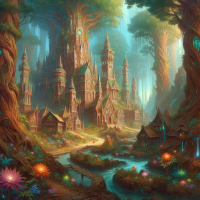
|
The Woodland Realm of Mitrona | Even the bravest of warriors have learned to fear the vast tracts of woodland that can be found throughout the realms of Eden. Surrounded by trees, it is all too easy to get disoriented and lost, but there is a more primal dread at work. In the forest, no one can ever be sure what is lurking just out of sight. Sounds are muffled, yet noises seem to come from everywhere – the snapping of twigs, a sinister rustling of leaves, and the creaking of the wind-stirred canopy above. Nowhere to hide, nowhere to run. Nothing to hear you besides the elemental wrath of the Azari’cerr. These people are highly-skilled elves with centuries of experience in their home environment, the forest. Once an outsider enters Myln Arbor - The mystical forest most of these people call home - it is unlikely he will leave in one piece. |
|---|---|---|

|
The Enlightened Kingdom of Luminion | The Scions of Illumination, as the Azari’cill call themselves, invoke this name because their existence reflects the pinnacle of civilization under the Mother’s wing. These luminous beings have blood that glimmers by magical properties. The glittering spires of the Azari cities stand like beacons in the lands where skill and enlightenment saturate the very air. The Azari’cill absorbed so much of this innate potential that when at war, it is said that the phalanxes of the Azari warhosts glow with robust power. An assault by an Azari’cill army is swift and carried out with flawless precision. The enemy is met with a forest of blades and barrages of elemental wrath. This claim of mastery also carries a deadly arrogance. The Azari come in glory, but they hail from a broken land, their elegant spires toppled and their statuary crumbled into the dust of a dead empire. The stories tell that it was the scourge of Fineall that ravaged the lands of silver; it was unavoidable. The age of the fallen spires has turned the empire of enlightenment into a spell-haunted ruin. Ever since the Time of Reinvention, the Azari’cill have managed to make peace with the lands they call home. |
World View
Character Traits
Upon creation of a Wood Elf character, you can pick two of the following traits for your character to reflect their background.
| Racial Traits - Wood Elf | |
|---|---|
| Nightseer | Players with this trait get the night vision effect when entering dark spaces and during the night. |
| Aspect of The Amber Dawn | Players with this trait double the amount of attacks on ranged weapons during the season Amber Dawn.
Outside of The Amber Dawn characters with this trait may use this effect once per CRP engagement. |
| Aspect of Eden's Shine | Players with this trait deal one additional damage on all melee attacks during the season Edens Shine (this trait can only activate twice per turn).
Outside of Eden's Shine characters with this trait may use this effect once per CRP engagement. |
| Aspect of The Emerald Dusk | Players with this trait can use the action "healing burst" which heals DE HP to everyone within 3 meter range during the season The Emerald Dusk.
Outside of The Emerald Dusk characters with this trait may use this action once per CRP engagement. |
| Aspect of Lilith's Veil | Players with this trait know the "Ice Maiden's Kiss" spell without needing to be a spellcaster during the season Lilith's Veil.
Outside of Liliths Veil characters with this trait can attempt to cast this spell once per CRP engagement. |
| Races | |
|---|---|
| Human Races | Attians · Khadans · Hinterlanders |
| Elvish Races | High Elves · Wood Elves · Dark Elves |
| Dwarvish Races | Denur · Halflings |
| Orcish Races | Orcs · Goblins |
| Other Races | Sylvani · Tieflings |
